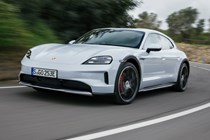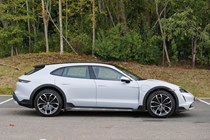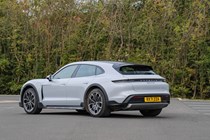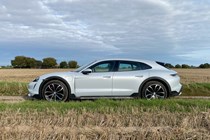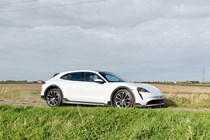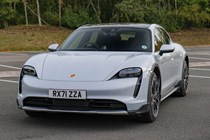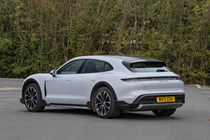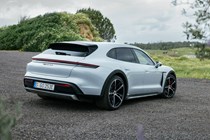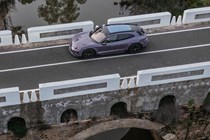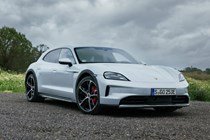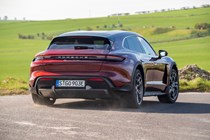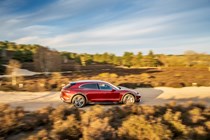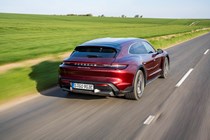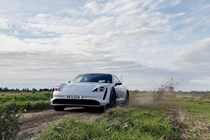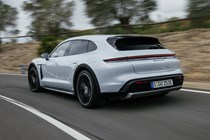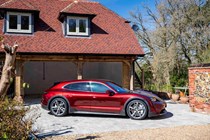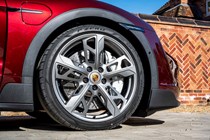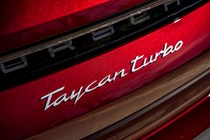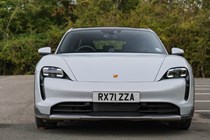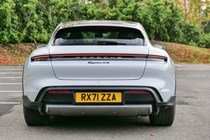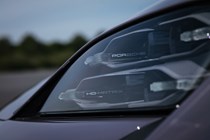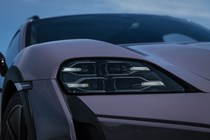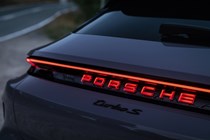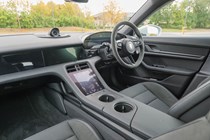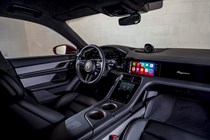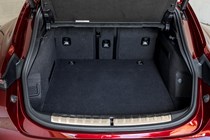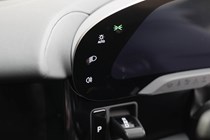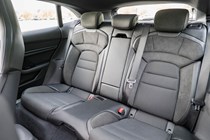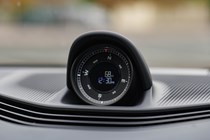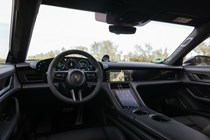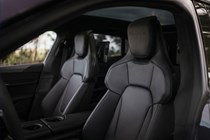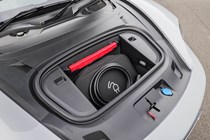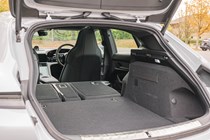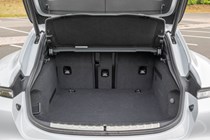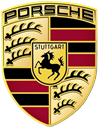
Porsche Taycan Cross Turismo engines, drive and performance
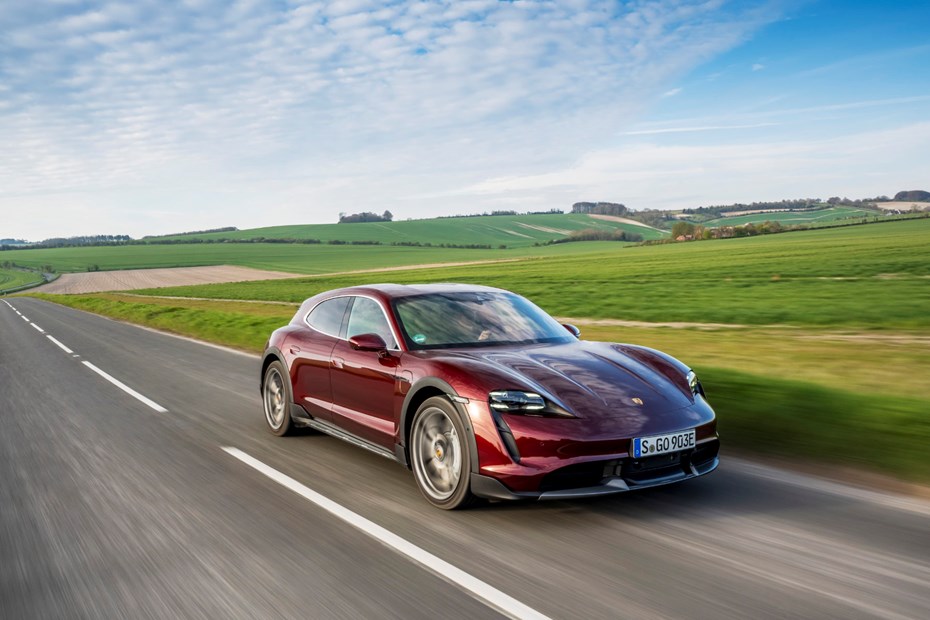
- Taycan 4, 4S, Turbo and Turbo S variants
- All are twin-motor and four-wheel drive
- Performance ranges from fast to outrageous
Powered by a pair of electric motors – one front, one rear – all Taycan Cross Turismos are four-wheel-drive and wholly electric. But even with this fundamental similarity there is a vast difference in the level of performance available across the range.
Electric motors
For pre-facelift cars power ranges from 380hp to 761hp and torque (pulling power) from 500Nm to 1,050Nm. Even the basic car is fast, but those numbers are tempered slightly by the 2.2-tonne weight of the Cross Turismo. The Turbo S, however, is a rocketship.
Facelift models from 2024 onwards receive a revised rear motor setup and a number of other enhancements that bring significant performance improvements. They’re also slightly lighter, but this is a matter of a few kilograms – a drop in the ocean for a contemporary electric car.
Regardless, the Taycan 4 Cross Turismo now produces 435hp, the Taycan 4S Cross Turismo 598hp, the Taycan Turbo Cross Turismo 884hp and the Taycan Turbo S Cross Turismo 952hp. Those are peak power figures, reached during launch control or via a ‘push-to-pass’ function controlled by a button on the steering wheel, but easily attainable. In the Turbo S, launch control will repeatably take you 0-62mph in 2.5 seconds – an experience that verges on the physically unpleasant.
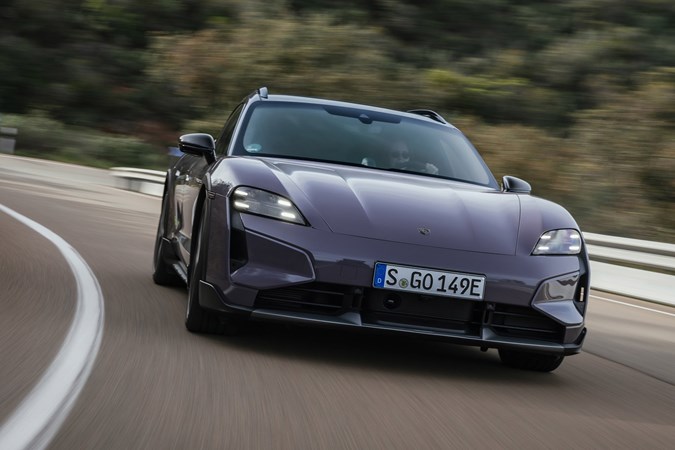
That overboost function kicks harder than before as, depending on model, it hammers an extra 95hp into the drivetrain. Similarly, torque has been increased across the range, starting at 610Nm for the Taycan 4 and going all the way up to 1,100Nm for the Turbo S.
You’re unlikely to be disappointed with the speeds any Taycan is capable of; for instance, the 4S is the heart of the range and that does 0-62mph in 3.8 seconds. Perhaps more surprisingly, they’re all easy to drive at sensible speeds as well, and the driving range isn’t massively different across the variants since a similar amount of energy is needed to travel at a given speed.
What’s it like to drive?
- Wonderfully capable and lots of fun
- Active Ride suspension option very clever
- Brakes may take a little getting used to
Our experience of the pre-facelift entry-level Taycan 4 Cross Turismo revealed an experience almost serene, not trying to match the silly figures that manufacturers like Tesla cram into more mainstream EVs at this price. Yes, it could be outpaced on a dragstrip by a higher-spec Model 3, but that’s not the point – this Taycan builds speed without troubling the chassis or brakes, always feeding back just enough of the road surface for considered, calm inputs until you’re going as fast as you want. It’s a big car, but doesn’t feel it, and it’s all down to the way the car communicates with the driver.
Switching to post-facelift and more powerful models, the major difference is obviously the available speed – they’re all faster than before, even the Taycan 4 – and the arrival of the new Porsche Active Ride suspension system. They go further per charge as well, but we’ll cover that on the next page.
Active Ride works with the standard air-suspension, but in place of conventional items such as physical anti-roll bars it has additional hydraulic pumping units. These marshal the flow of fluid to the shock absorbers at each corner so swiftly and so precisely that Active Ride can control the pitch and roll of the Taycan to a hitherto unprecedent degree (pun intended).
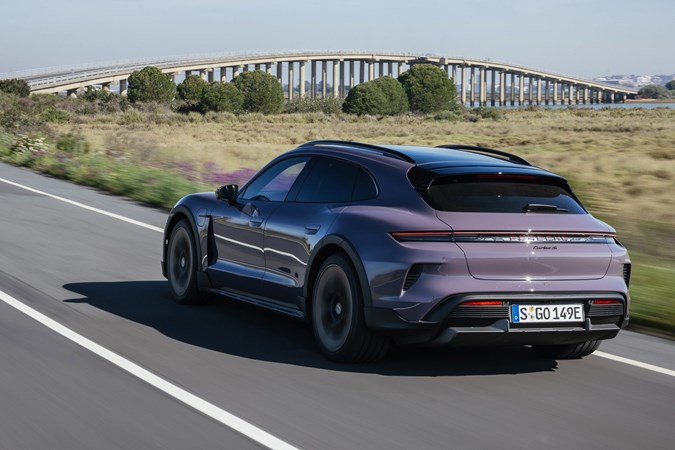
This not only delivers an exceptionally smooth ride – cementing the Taycan’s position as one of the best luxury cars you can buy, regardless of its more overt performance positioning – it also stops the car squatting under hard acceleration and diving under hard braking. And instead of simply resisting body roll it can actually lean the car into the bend instead. Like a motorbike.
Porsche is not the first car manufacturer to attempt such feats, but this is the first time it’s been truly convincing – the Taycan has near otherworldly body control, making it possible to travel faster more smoothly than ever before. But it does take some getting used to; if you’re an enthusiastic driver you’ll have to recalibrate your natural expectations somewhat and the car makes unexpected adjustments beneath you.
Porsche has considered this – of course it has. So the Active Cornering Dynamics and the Accleration and Braking Comfort modes are only available in the Normal driving mode. Switch to Sport or Sport Plus when you’re oin the mood to have fun and you’ll find the Taycan’s reactions a little more normalised (though still incredibly well controlled). You never fully escape the 2.2-tonne weight, but you can drive the Cross Turismo very quickly in a manner that’s both safe and fun.
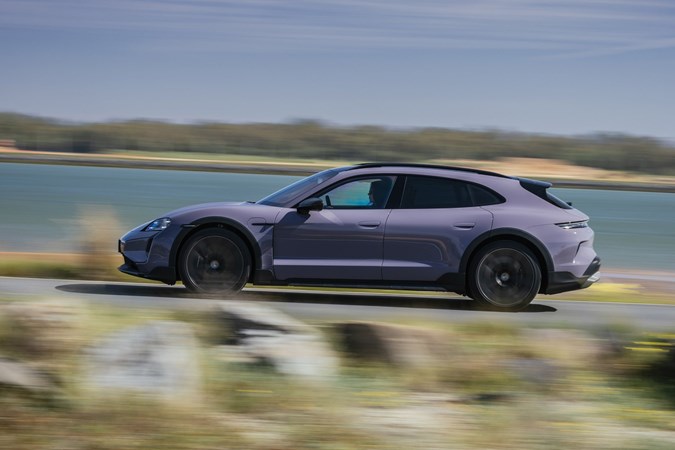
The available rear-wheel steering helps with the nimbleness, while the brakes are unlikely to cause you many issues on the road. They are balancing an energy-recuperating process against the pure friction of the discs and pads, so the feel is a little less determined than it can be in other Porsches, but it still stops well and with outstanding precision.
The Cross Turismo gets an additional Gravel driving mode, which raises the ride height – already 20mm higher than a standard Taycan – a further 30mm for rougher tracks. This simply underlines the multifaceted usefulness of this particular Taycan variant, though you’re unlikely to get very far green-laning…


